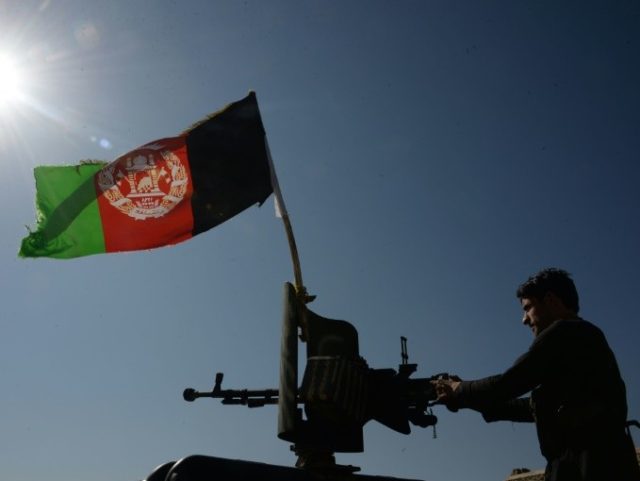A watchdog agency overseeing the U.S. presence in Afghanistan found evidence that U.S. government policies may have fueled the growth of the endemic and widespread corruption in Afghanistan and aided terrorist groups targeting American soldiers.
“Corruption undermined the U.S. mission in Afghanistan by fueling grievances against the Afghan government and channeling material support to the insurgency,” noted the congressionally-appointed Special Inspector General for Afghanistan Reconstruction (SIGAR) John Sopko in a 150-page report released last week, adding, “U.S. money was flowing to the insurgency via corruption.”
Despite acknowledging the threat of corruption to the future of Afghanistan and U.S. servicemembers, the U.S. government and policymakers have turned a blind eye to the problem, alleges SIGAR, noting that “security and political goals repeatedly trumped strong anticorruption actions.”
“Corruption grew so pervasive that it ultimately threatened the security and reconstruction mission in Afghanistan,” reported SIGAR, adding:
The United States contributed to the growth of corruption by injecting tens of billions of [U.S. taxpayer] dollars into the Afghan economy, using flawed oversight and contracting practices, and partnering with malign powerbrokers [including drug traffickers, arms smugglers, human rights abusers, rapists, and other criminals].
Some of the U.S. taxpayer funds were siphoned off to fund the insurgents fighting the U.S.-led coalition, namely the Taliban, the Haqqani Network, and others, through billions of dollar spent on U.S. Department of Defense (DOD) contracts.
Citing the U.S. Embassy in Kabul and former Amb. Ryan Crocker, Sopko noted that corruption may present a bigger or at least equal threat to the U.S. mission in Afghanistan than terrorism.
The Pentagon eventually recognized that the Taliban, al Qaeda, and other insurgents were not the U.S.-led coalition’s only enemies.
“A more amorphous threat emanated from the very [corrupt] government the coalition sought to bolster and defend,” reports SIGAR.
“The ultimate point of failure for our efforts… wasn’t an insurgency. It was the weight of endemic corruption,” Crocker recently told SIGAR.
“Official corruption and the money flowing from the drug trade are perhaps as likely as is the insurgency to undo our efforts in Afghanistan,” reportedly warned the U.S. Embassy in Kabul.
In 2014, American Gen. John Allen, soon after he retired from his position as the top commander of U.S. and NATO forces in Afghanistan, in a letter he intended to send to the new Afghan president, wrote:
The great challenge to Afghanistan’s future is not the Taliban or Pakistani safe havens or even an incipiently hostile Pakistan. The existential threat to the long-term viability of modern Afghanistan is corruption.
The SIGAR report adds:
Our analysis reveals that corruption substantially undermined the U.S. mission in Afghanistan from the very beginning [in October 2001]… We found that corruption cut across all aspects of the reconstruction effort, jeopardizing progress made in security, rule of law, governance, and economic growth. We conclude that failure to effectively address the problem means U.S. reconstruction programs, at best, will continue to be subverted by systemic corruption and, at worst, will fail.
Since the Afghanistan war began in October 2001, the U.S. has spent $115 billion on its reconstructions efforts, the large majority (about $70 billion) on developing and training the Afghan security forces, an institution rife with corruption that pays for service members that do not exist. Moreover, the forces, which include police and military units, continue to face capability lapses and are unable to combat the insurgency without the assistance of the U.S. military.
Corruption has sabotaged the U.S. mission by swelling the Taliban ranks with people who distrusted their government and funneling funds to support the terrorist groups, often referred to as the insurgency by the American government.
Currently, the most prominent and strongest terrorist group in Afghanistan is the Taliban. Despite nearly 15 years of U.S. efforts to degrade it and, the so-called insurgent group’s reach is greater than at any time since it was dethroned in 2001, a feat it has accomplished with the apparent help of the U.S. government.
Corruption has gotten worse as the Taliban and other insurgent groups, namely al Qaeda and now their rival the Islamic State (ISIS/ISIL), continue to proliferate in the country.
“Our report points out that while corruption in Afghanistan pre-dates 2001, it has become far more serious and widespread since then,” notes SIGAR.
At the beginning of the Afghanistan war, with approximately $1 billion at its disposal, “the CIA channeled money, food, ammunition, and other means of support to the warlords and their militias” to fight the Taliban and al Qaeda, reports SIGAR.
Some of those militias, which included warlords, opium traffickers, arms smugglers, and other criminals were collectively known as the Northern Alliance who had been fighting the Taliban for years and were now sanctioned by the U.S. government.
Eventually some of those militia leaders ended in high-ranking political positions and were a big part of keeping the corruption machine in Afghanistan running. They may have also played a role in Afghanistan becoming the world’s number one producer of opium and its derivative heroin. Afghan opium production and harvesting has grown at least 20-fold since the U.S. invasion.
In Afghanistan, there is “a strong nexus of corruption, narcotics trafficking, criminality, and the insurgency,” points out SIGAR.
In 2013, The New York Times (NYT), “much of the CIA’s money goes to paying off warlords and politicians, many of whom have ties to the drug trade and, in some cases, the Taliban.”
Since the war started, 2,240 U.S. troops have been killed and another 20,168 wounded, primarily at the hands of the Taliban, a Pentagon tally shows.

COMMENTS
Please let us know if you're having issues with commenting.